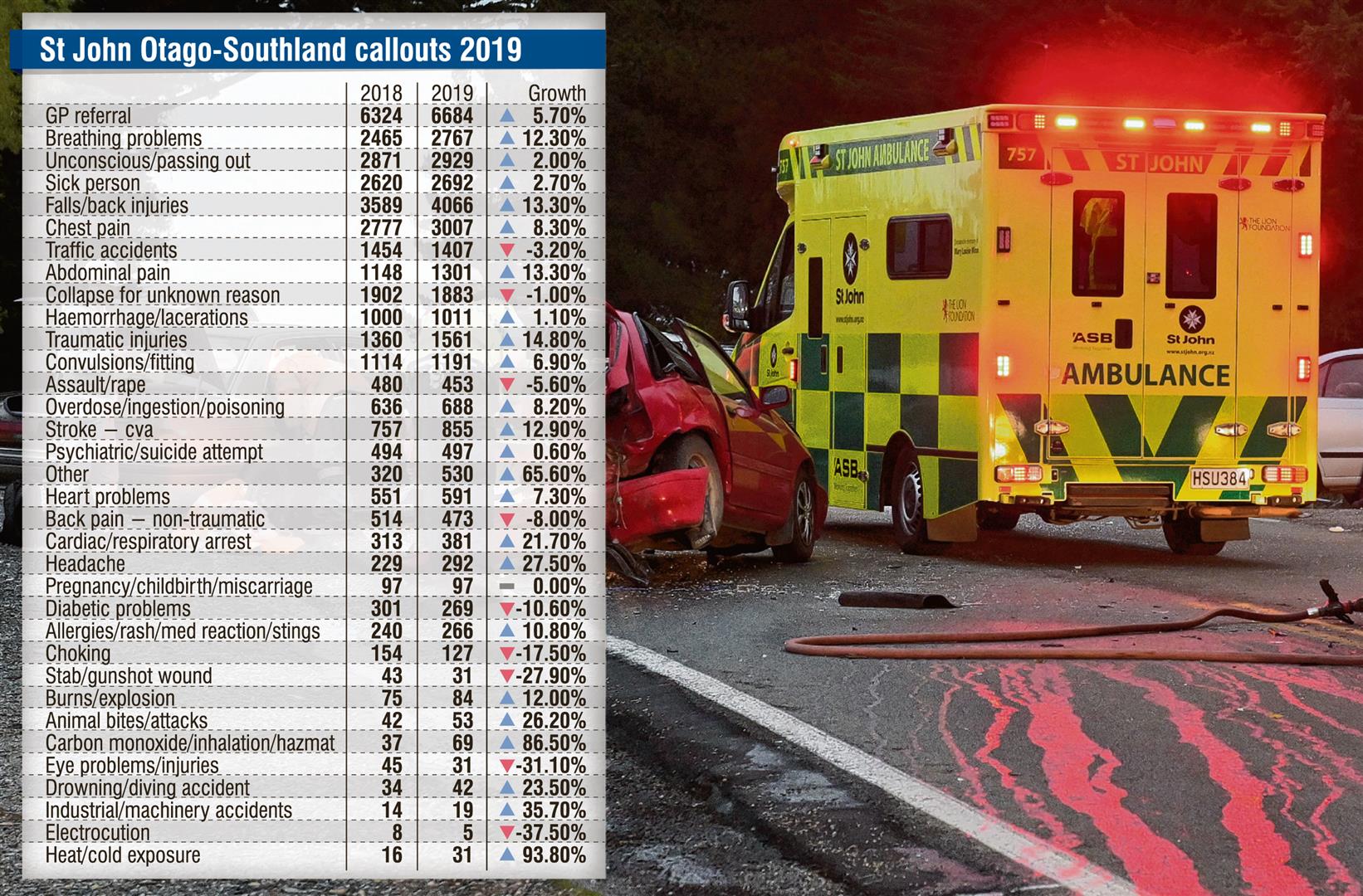
Information the emergency service organisation released yesterday showed double-digit increases in the South in callouts for breathing problems, falls and traumatic injuries.
St John operations director Norma Lane said in addition to the increased number of callouts, ambulance officers were attending ‘‘more complex cases’’.
‘‘It can take time to stabilise and treat patients with serious and complex conditions, meaning ambulances are not available to respond as quickly to the next call.’’
Nationally, ambulances were fully crewed 97% of the time and the organisation was on track for all ambulances to be double crewed in 2021, Ms Lane said.
St John had 712 ambulances and operational vehicles, 1333 paid ambulance officers and 3335 volunteers, a spokeswoman said.
In Otago and Southland there were 248 paid ambulance officers and 482 volunteers, 15 ambulances and 16 first response units.
The statistics for 2019 showed an increase on 2018 figures for callouts for GP referrals, up 5.7% to 6684; breathing problems, up 12.3% to 2767; falls or back injuries, up 13.3% to 4066; and traumatic injuries, up 14.8% to 1561.
Callouts for stabbings or gunshot wounds in Otago and Southland dropped 27.9% from 43 in 2018 to 31 in 2019.
Nationally, calls for mental health related incidents increased by 10% in 2019. The group with the greatest increase was those aged 70-79, but the number of men calling for mental health reasons also increased, and now made up 47% of all mental health callouts, up from 39% in 2018.
A breakdown of those numbers for Otago and Southland alone were not available yesterday.
The overall number of callouts in Otago and Southland rose from 34,024 in 2018 to 36,383 last year.
St John
In Otago and Southland, 2019
- 248 paid ambulance officers, 482 volunteers
- 15 ambulances
- 16 first response units
- Called out 36,000 times
- Most callouts: GP referrals
- Biggest increase: traumatic injuries (up 14.8% to 1561 calls)
How it operates
- St John provides emergency ambulance services to 90% of New Zealanders and covers 97% of the country’s geographical area
- St John received more than 500,000 calls to 111 centres in the past financial year (ended June 2019)
- St John staff includes full-time paid employees and volunteers
- St John has contracts with the Ministry of Health and ACC that fund about 72% of the operating costs for the ambulance service. The remaining 28% is funded through emergency ambulance part charges, fundraising and donations.
Source: St John
Comments
It would be useful if St John could provide more accurate information.
The key area of "15 Ambulances" is a case in point. Even the casual observer would note there are more ambulances than that. An Ambulance , as described in the NZSA 2018 standards, is a vehicle able to transport a person lying flat. A first response vehicle cannot transport as the person cannot lie flat. If you take note of Ambulances in smaller rural areas, mainly crewed by Volunteers, they are able to transport. Do a simple count up and you will note more than 15.
Down grading the valuable and skilled role of volunteers as "First response" is disingenuous to volunteers.
This also does little to enable accurate reporting.











